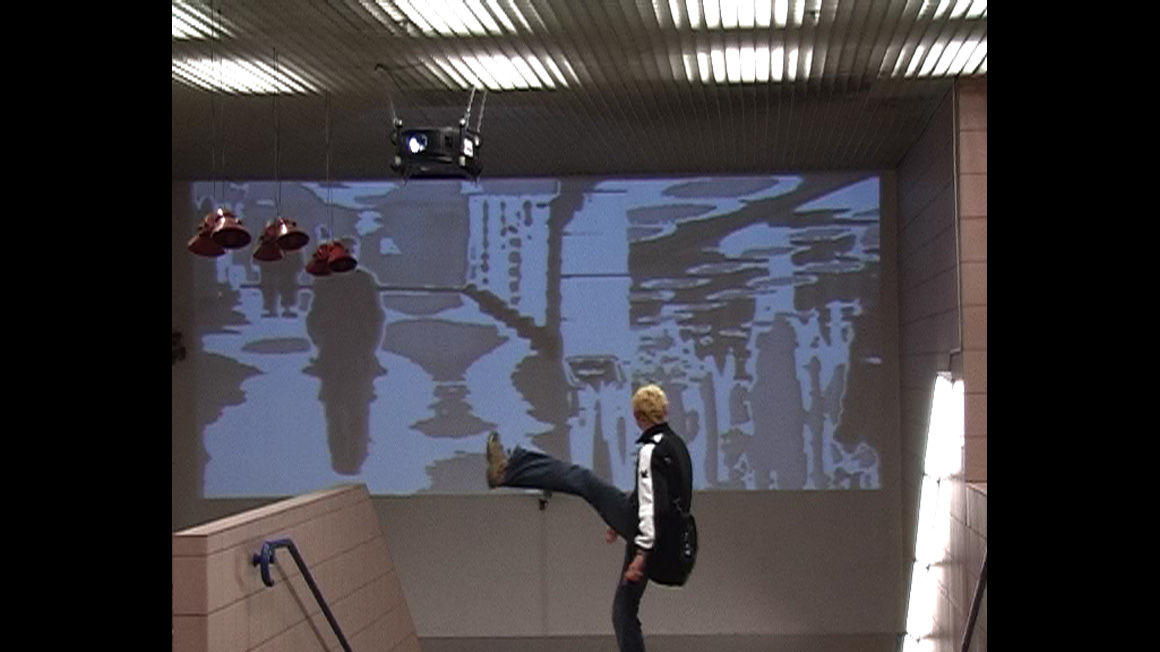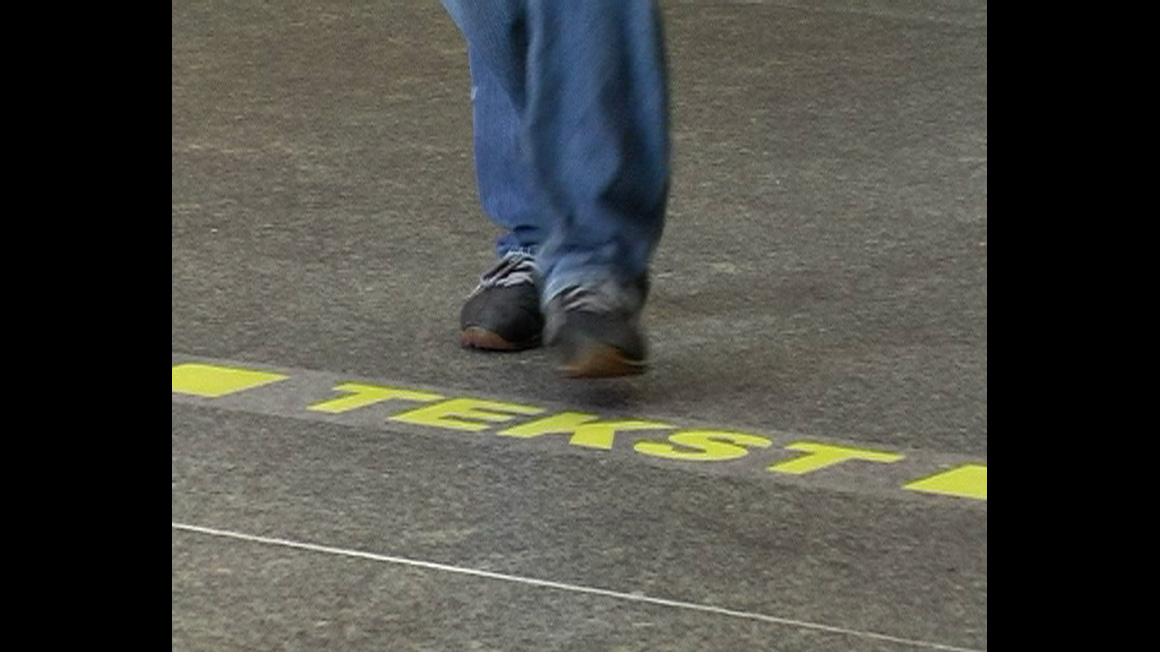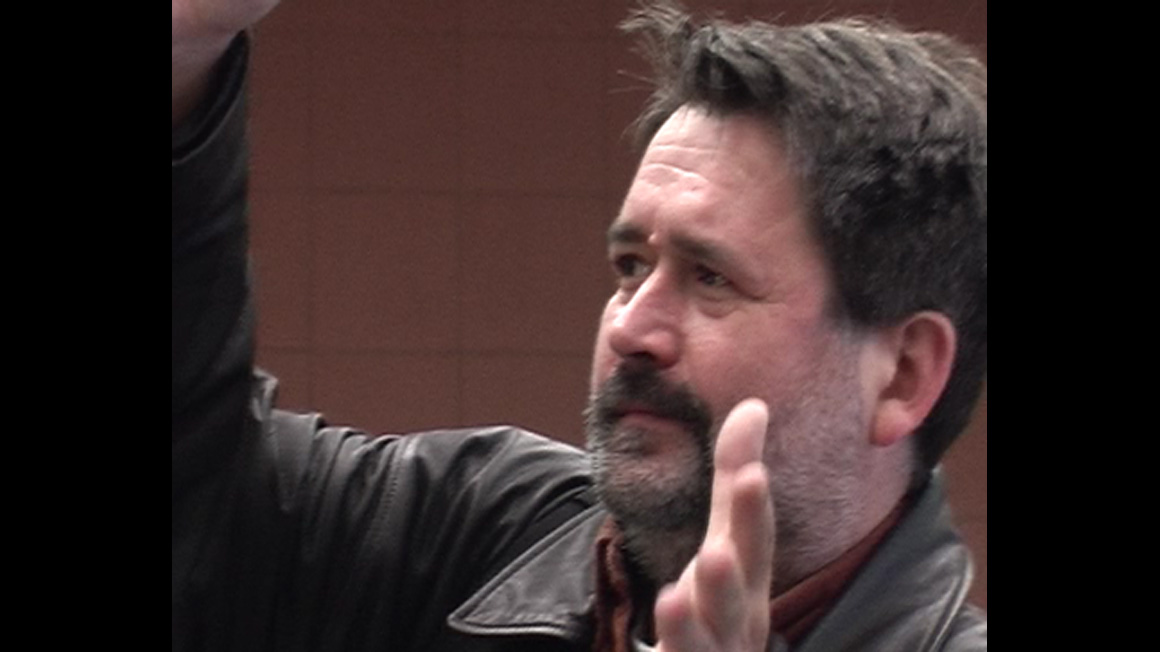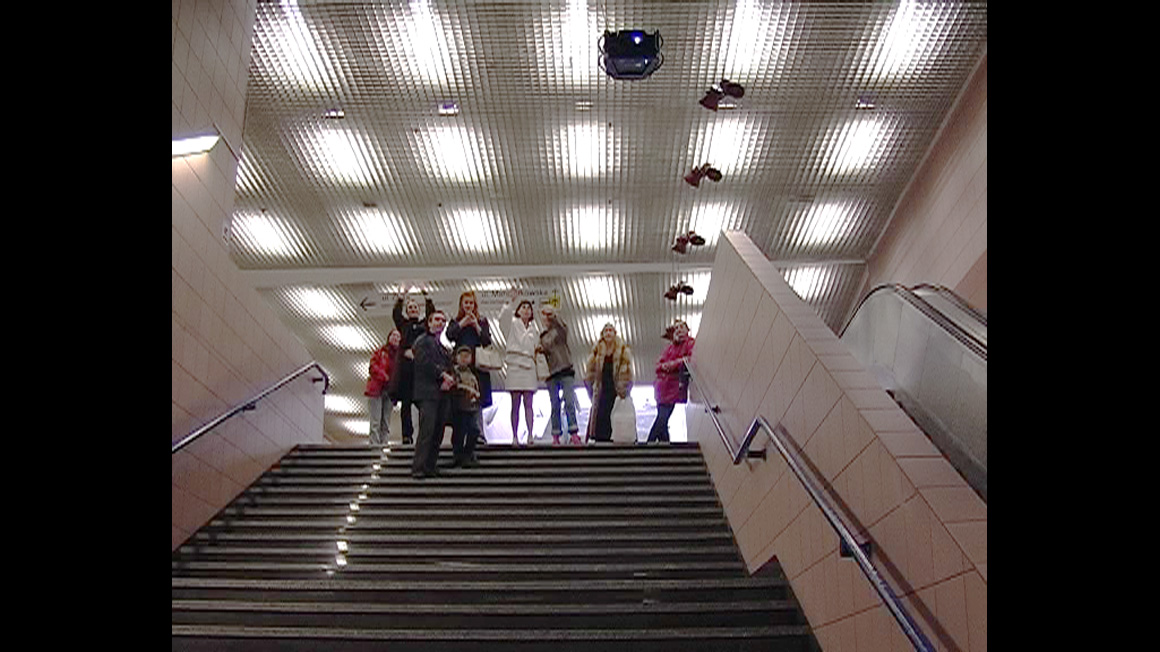TRASA is a simultaneous installation at two places in public space, which are connected through two media: an acoustic media by which texts and electronic sounds are transfered and a visual media by which live-images of the people passing by are transfered.
The audiovisual situation TRASA was first realized at two central places in Berlin and Warsaw: Alexanderplatz and Plac Defilad. In these strongly mercantile shaped environments the passers-by of both cities could meet on their passage to the underground.
The passage halls lead directly to a wall above a staircase. There a camera was installed which filmed the people from a frontal perspective. These images were projected on the wall and at the same time streamed to the other city. The image of the other city was projected directly next to the own mirrow-image.
People of one urban space faced people of the other urban space – and at the same time regarded theme-selves. Perception of the others and oneself in a simultaneous process.
time delay
The streaming caused a delay of approx. 2 sec. in the video-projection at the distant place. The local images were delayed as well so one would percept oneself with a shift in time. This phenomenon motivated the visitors of the installation to extensively explore the interactions with themsel-ves before noticing the second part of the image with people from the other city. The emerging manners to comunicate through gestures and body-language varied vastly and ranged from dumb standing face to face to political demonstrations.
visual estrangement
By estranging the images into a grey shaded image, rich in contrasts and blurred, differences of age, class, nationality and gender were smoothed out. One would face another person without making out who he was. Even oneself was a stranger. Because the images were projected directly on the walls – in Berlin the walls were covered with greenish tiles – they were even less clear. The wall became a window which offered insight into a remote urban space.
virtual borders
The perspective of the camera aimed to show the long passage and the passers-by approaching the image. Just before the downgoing staircase they reached full body size. Because of the borders of the image people could suddenly enter and leave the image or they could play with the border between the two images from Berlin and Warsaw, could merge or touch each other virtually.
acoustical topography of text
Within the visual constellation a spacial track was defined by a sensor (laser). Moving on it made audible two poems , in Berlin the poem ... by Heiner Müller, in Warsaw „Bahnhof“ von Wislawa Szymborska –. (see the yellow line TRASA-TEXT).If a person stepped into a certain spot of the track the assigned text would start in a musical ornamentation. Thus the text could be physically crossed and experienced according to the own position.
interactive text loops
The position of the person initiated a loop and at the same time a process of variation of this loop. Similar to the method of granular synthesis the position and the length of the time-frame resp. the loop was variable. Through this artistic strategy smooth transitions were created as well as new combinations of text-fragments and thus a new meaning (s. moving text window).
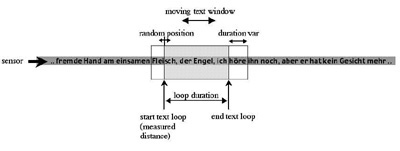
generating a common sound space
The varying text-loops would be spacialized by 10 to 16 red loudspeakers. While the people in Warsaw determined the polish text the germans determined the german text structure. The Data was transfered simultaneously so both texts (and both „movements“) could be heard at both locations. The languages were mixed to a common sound space of comprehensible and uncomprehensible speech.
poetic reflection
The content of the poems reflected the real situation: meeting and not-meeting. Both poems talk about something missing. In the audio-visual situation people in both cities could see but not touch each other, could not talk and listen directly but hear the other language. The intimacy of the poem was in harsh contrast to the anonymity of the urban situation. In addition utopic thoughts are articulated in the poems:
Szymborska: „In the paradise lost of probalitity. Somewhere else. Somewhere else. How these little words ring.“ Müller: „The angel I hear him still. Although he no longer has a face“. Both poets end with an acoustic metaphor for the loss of utopy.
Heiner Müller: Unlucky Angel 2
Between city and city
After the wall the abyss
Wind at the shoulders the foreign
Hand on the lonely flesh
The angel I hear him still
Though he no longer has a face
But yours which I do not know
Wisława Szymborska: The Railroad Station
My nonarrival in the city of N.
took place on the dot.
You'd been alerted
in my unmailed letter.
You were able not to be there
at the agreed-upon time.
The train pulled up at Platform 3.
A lot of people got out.
My absence joined the throng
as it made its way toward the exit.
Several women rushed
to take my place
in all that rush.
|
Somebody ran up to one of them.
I didn't know him,
but she recognized him
immediately.
While they kissed
with not our lips,
a suitcase disappeared,
not mine.
The railroad station in the city of N.
passed its exam
in objective existence.
The whole remained in place.
Particulars scurried
along the designated tracks.
Even a rendezvous
took place as planned.
Beyond the reach
of our presence.
In the paradise lost
of probability.
Somewhere else.
Somewhere else.
How these little words ring |










